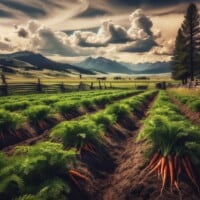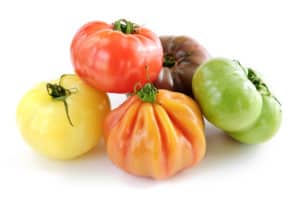Alaska, the land of the midnight sun and breathtaking wilderness, isn’t always the first place that comes to mind for vegetable gardening. But guess what? You can absolutely grow carrots in this rugged, northern frontier. In this guide, we’ll dive deep into the world of growing carrots in Alaska, sharing tips and insights that will help you master the art of cold-weather gardening. From unique climate challenges to the best carrot varieties for the job, we’ve got you covered.
Contents
Climate and Soil Conditions
Before we get our hands dirty, let’s understand the lay of the land—Alaska’s climate and soil conditions. You might think it’s all snow and ice, but there’s more to it.
The Alaskan Climate
Alaska boasts a diverse range of climates, from subarctic to polar, with regions experiencing drastically different weather patterns. Winters can be brutally cold, and some areas see extended periods of darkness. Summers, on the other hand, offer almost perpetual daylight, which can be a game-changer for growing vegetables.
Soil Conditions
The soil in Alaska can be quite variable, ranging from sandy to loamy and sometimes rocky. The key is to understand your local soil type and work with it. Some areas may require soil amendments to create the ideal growing conditions for carrots.
Impact on Carrot Growth
Alaska’s unique climate and soil conditions can pose both challenges and advantages for carrot growth. The long summer days can promote rapid growth, but the short growing season means you need to be strategic with your planting. Additionally, the cold weather can make the soil hard, making it difficult for carrot roots to penetrate.
Choosing Carrot Varieties
Now, let’s talk carrots. Not all carrot varieties are created equal when it comes to Alaska’s climate.
Cold-Hardy Varieties
Opt for cold-hardy carrot varieties like ‘Nantes’ or ‘Little Finger.’ These carrots are better equipped to handle the chilly Alaskan nights and shorter growing seasons.
Disease Resistance
Consider varieties that are resistant to common carrot diseases like carrot rust fly. Disease-resistant carrots can save you a lot of headaches in the long run.
Planting and Growing Tips
Okay, now that you’ve picked your carrot varieties, let’s get those seeds in the ground.
Planting in Alaska
- Timing is Everything: Start planting your carrot seeds as soon as the ground can be worked in the spring. The early start takes advantage of the long summer days.
- Raised Beds: If your soil isn’t ideal, consider raised beds. They warm up faster and drain well, both critical factors in cold climates.
- Spacing Matters: Plant carrot seeds about ¼ to ½ inch deep and space them 2-3 inches apart. Proper spacing prevents overcrowding and competition for resources.
Caring for Your Carrots
- Thinning is winning: Once your carrot seedlings reach a few inches in height, thin them out to maintain the recommended spacing. Crowded carrots won’t develop properly.
- Mulching Magic: Apply a layer of mulch around your carrot plants to help retain moisture and regulate soil temperature. Mulch also keeps pesky weeds at bay.
- Consistent Watering: Carrots like consistent moisture, so keep the soil evenly moist throughout the growing season. Don’t let it dry out or become waterlogged.
Dealing with Challenges
Growing carrots in Alaska isn’t without its challenges. Let’s tackle a few of the most common ones.
Short Growing Season
The limited growing season in Alaska means you need to make the most of every day. Start early, and if possible, use row covers or cloches to extend the season in both spring and fall.
Pests and Diseases
Carrot rust fly and aphids can be unwelcome guests in your carrot patch. Keep an eye out for these critters and employ organic pest control methods when necessary. Disease-resistant carrot varieties can also help mitigate the risk.
Harvesting and Storing Carrots
You’ve worked hard, and now it’s time to reap the rewards. Harvesting and storing your Alaskan-grown carrots is a satisfying finale.
Harvesting
- Timing is Crucial: Harvest your carrots when they reach their desired size, typically around 1 inch in diameter. Don’t wait too long, or they might become woody.
- Gentle Extraction: To remove carrots from the soil, gently loosen the surrounding earth and pull them up by the tops. Be delicate to avoid damaging the roots.
Storing
- Trim the Tops: Before storing, trim the green tops down to about an inch. This prevents moisture loss and prolongs freshness.
- Cool and Dry: Store your harvested carrots in a cool, dry place, ideally in a root cellar or a refrigerator crisper drawer. They can stay fresh for several months when stored properly.



